
Type Five - Personality Formation
-
Type Five is called “The Investigator - The Intense, Cerebral Type.”
To understand the Five as a “personality type” it is helpful to hold what we learn about Fives within their life story. The story of how the original sensitivity to deep knowing and understanding set the life course of the Five from childhood; how even as the personality constricts and distorts through life’s difficulties, it retains the essential orientation to wanting to know.
The return journey is one of reconnecting to what was lost at birth- the lost essential quality that is imprinted on the soul.
There are nine of these stories, but they have in common this original “fall” and forgetting, this wounding and recovering, this mysterious pattern- and we hold the personality type with much more understanding and compassion when we remember this story.
-
“Born” sensitive to deep understanding, the young Five looks around their world and naturally sees a lot that doesn’t make sense.
But how can a child sensitive to understanding, to things making sense, do anything about creating this in the world they are born into?
For every type on the Enneagram, it is important to understand that this is the original dilemma – we want to create a certain quality through the personality, and this is mission impossible.
Young Fives observe their environment and understand in a precocious way that the world is scary. Maybe there were frightening circumstances or events, or maybe they felt alone, but somehow the young Five concluded that the world is not safe and that they are on their own.
The Five solution to this existential fear is to minimize their needs and not rely on others to meet them, and to seek knowledge that will help them understand the world. Young Fives withdraw into a private mental world where they feel safe. Five children describe reading a lot and spending time alone in their rooms.
They also describe a deep curiosity that led them to try to learn about many subjects. Stereotypically, this is sometimes the child who likes Lego or dinosaurs or any area of fascinating learning. A common example of the Five child is studying ants- the child who notices how ants disappear down a hole in the ground and wants to know where they went and might embark on learning all about ants. Other children may not even notice the ants going into their holes- and if they do notice they don’t wonder about what is beneath the ground. Updated, today the Five child is probably into computers and technology.
-
A person cannot create the essence they are sensitive to in the world. The essence already exists, and it is not the job of the person to create it- but we don’t understand this. Because we can’t actually create this essence at the level of personality, there is a twist or distortion that occurs.
The fundamental distortion of the Five personality is to substitute intense thinking, trying to figure things out, for knowing they are safe and part of an intelligent system. This inward mental focus isolates the Five and they become observers of the world. The name for type Five used to be the “Perceptive Observer”. Once separated from a sense of support, Fives must rely on themselves alone and they try to accomplish this in their heads. Because this is very difficult, they come to feel incapable.
The next twist of the personality is that this mental activity turns to a narrow focus. Now, the Five wants to master a subject, have an expertise or area of special knowledge. The competence the Five is after, which is really to feel safe and capable in a vast scary world, becomes associated with being an expert in their subject matter.
This core painful feeling is reflected in the Unconscious Childhood Message: “It's not ok to be comfortable in the world”- and in the Lost Childhood Message: “Your needs are not a problem”.
Fives have an Inner Critic that demands they focus their attention on acquiring knowledge and expertise. The Inner Critic message for Five is“I’m good or ok if I have mastered something”.
So, the personality becomes organized around intense thinking- concepts and ideas replace the missing sense of being part of an intelligent, supportive reality. The Five retreats into a private mental world where they feel safe and they don’t need to rely on others- a structure based on substituting knowledge for participation, and they can become isolated and detached.
-
The Five is withdrawing to get safety or security- how does this work? For Fives this means withdrawing from the world into their minds, trying to find a sense of safety by figuring out how things work. There is also a withdrawing from others as Fives come to prefer being alone in their private world and experience others as an intrusion. This is a straightforward strategy of withdrawing and trying not to need or rely on others. There is no real inner conflict in this strategy as there is nothing the Five feels they need from others, and they don’t want attention. The difficulty is more that nothing in the personality pulls them out into the world- it is all about retreating.
Another way of understanding this strategy of the Five is to recall that they are in the Head or Thinking Center of Intelligence and they are trying to get Security by using their Head Center. Fear is the underlying emotion and thinking is the Five’s way of dealing with their fears. Again, this is a straightforward approach that is not countered by competing drives in the personality. This is why isolation can result- all resources and solutions are sought in private and in the realm of ideas and thinking.
The Chain Reaction for Five
Soul is sensitive to deep knowing and higher intelligence
Losing contact with essence, encountering a random frightening reality
Personality forms around attempt to create security through knowledge and not relying on others
Do this by withdrawing into mental concepts and mastering their subject matter
Issues of being isolated and observing rather than participating in life
The Spiritual Path of the Five
This is a brief preview of the Five’s spiritual journey in life.
A personality structure based on acquiring knowledge to feel safe, withdrawing into a private mental world and not needing anything from others, creates a sort of “hoarding” in the Five. Fives want to rely only on themselves and they hold on to the resources they acquire, even though their needs are minimal. This explains why the return path for the Five is to “Non-Attachment”, letting go and participating in the flow of life, trusting that resources will be sufficient and their needs will be met.
This is the Five in all of us, the part that wants to cling to what we have and resists accepting what Buddhists call Impermanence- the fact that everything changes and nothing lasts forever.

Come back to square one, just the minimum bare bones. Relaxing with the present moment, relaxing with hopelessness, relaxing with death, not resisting the fact that things end, that things pass, that things have no lasting substance, that everything is changing all the time—that is the basic message.
~ Pema Chodron








